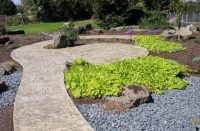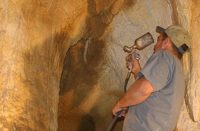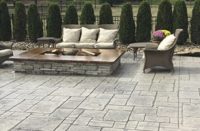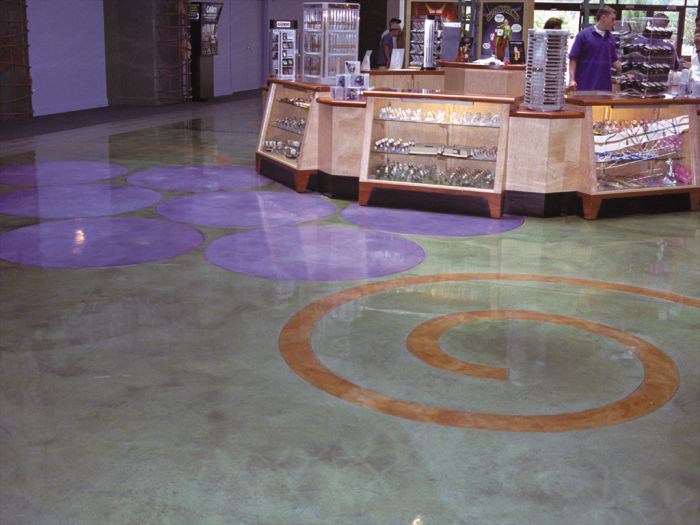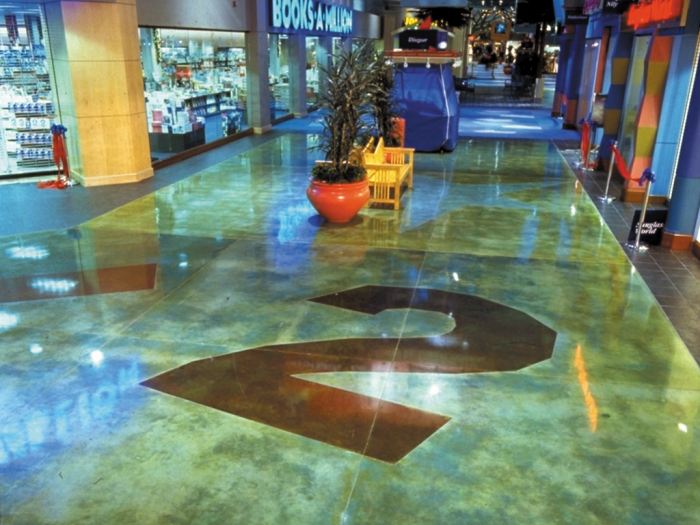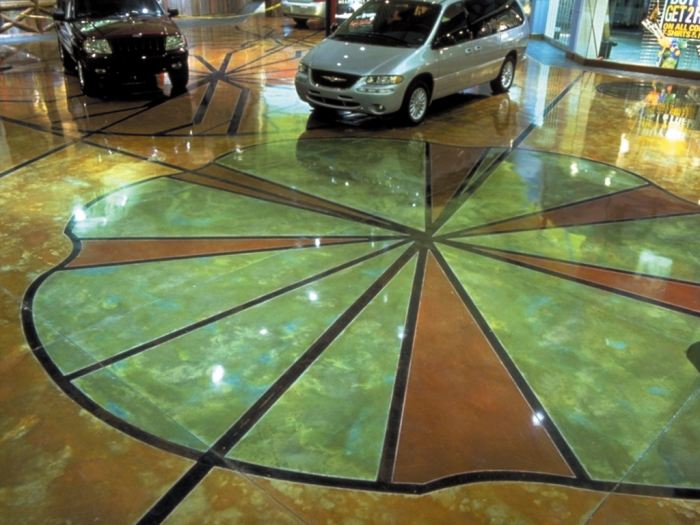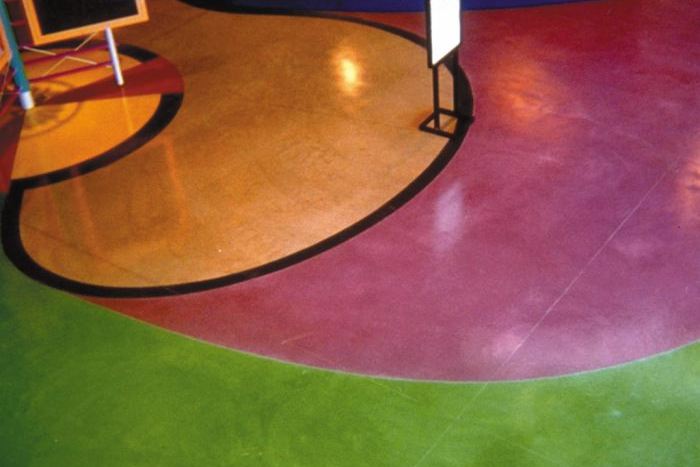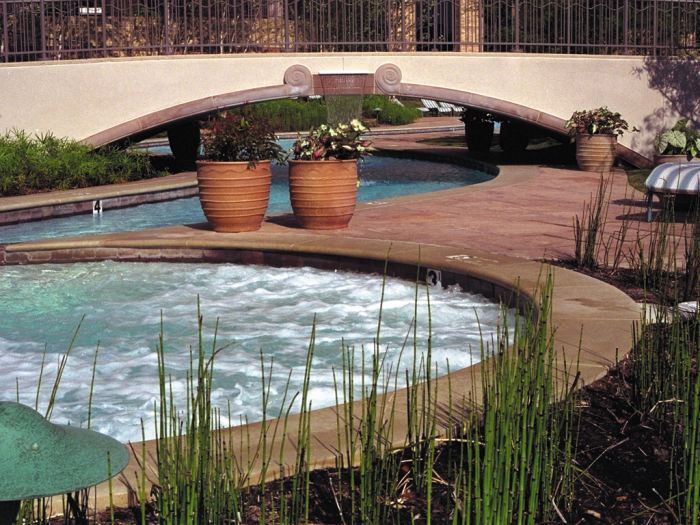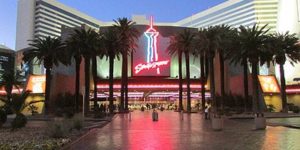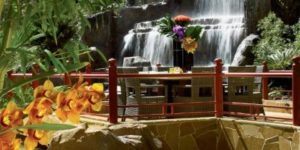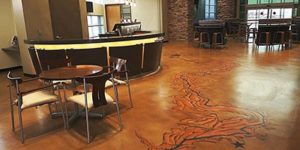Ron Garamendi
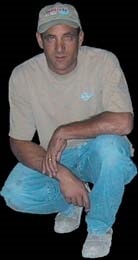 In “The Entertainment Capital of the World” the tendency might be to look up at all the bright lights. But if that’s all you do, you’re likely to miss some exceptional magic right under your feet. In the glitzy theme world of Las Vegas, concrete is everywhere. Making it look like anything else but concrete takes the magical talent of someone like Ron Garamendi.
In “The Entertainment Capital of the World” the tendency might be to look up at all the bright lights. But if that’s all you do, you’re likely to miss some exceptional magic right under your feet. In the glitzy theme world of Las Vegas, concrete is everywhere. Making it look like anything else but concrete takes the magical talent of someone like Ron Garamendi.
No, he’s not really a magician in the traditional sense. Though Garamendi’s barely in his mid-30s, this Salt Lake City native has been working with concrete since he was about 15. Some of his first experiences with concrete were when his older brother took him out of high school to pour concrete. Then during summers and after he graduated high school he worked as a concrete finisher.
“When I started out, there wasn’t a whole lot of decorative concrete work. Everything we did was straight and flat, but when we did something on the decorative side we’d do exposed aggregate or swirled finishes,” he relates. His first experience with colored concrete opened a world of new possibilities for him and he seemed to have a flair for decorative concrete work. Relocating to Las Vegas has provided unique creative opportunities.
Practice makes perfect
Garamendi says he got his real start in decorative concrete when he was a concrete superintendent for a concrete company. “I worked on a project with two colors of concrete with an acid wash. Then the developers of the Monte Carlo Casino asked the company to put together an architectural concrete division to handle all the stamped concrete for several upcoming projects. I was asked to head up that new division.”
“A consultant provided me information about basic techniques, but the industry was only beginning to take shape,” he reports. “There wasn’t a whole lot of information about decorative concrete. Bomanite was probably the only company doing it in Las Vegas when I got started. We would get new materials and try them out. We weeded out what we didn’t like and experimented more with the materials we did like,” he explains.
With casinos and other big jobs, you have only one chance to get it right, Garamendi says. “If a material hasn’t been tested long enough it could fail, and that could make it hard to work with that client in the future. The sample process is the most important aspect-and you have to keep good records.
Finding the Right Product
“You can find out about products that have a history. With new materials, it pays to have samples made or I might test it on a smaller project, such as a residential project. I let the client know what I’m doing, of course, then the client and I can watch how it performs.”
For example, “I went through a lot of sealers to find a good one. I’ve found that QC II, though a little higher priced, has great predictability. I use Scofield stains because they have good predictability. Recently, I’ve also tried Rare Earth stains at my own home. I’ve found they have good workability and colors, and so I’m looking forward to also using them on commercial projects.”
As far as his tried-and-true favorites, he likes Ardex Inc. and Concrete Solutions Inc. products for stamped overlays, self-leveling and trowelable toppings.
Sometimes, however, the magic doesn’t happen. “There have been some situations where the job didn’t turn out the way I wanted, and I take that personally,” he confesses.
Creating the illusion
“A lot of times we’ll have an architect or owner who has a concept or a theme and they bring it to us. Then I work to come up with solutions that fit with the budget,” he says. “For the Mandalay Bay Hotel and Casino, the goal was to incorporate the Mandalay flower design into the concrete. We were able to do that.”
Today, a variety of techniques and products enable Garamendi to create his magic. Stampable toppings are good for theme work, he says, because they are cost-effective and they don’t take too much time to install. “The wide variety of patterns and textures are all made to impersonate a natural material, so you can use patterns — such as London Cobblestone and European Fan — to get the look a designer wants with a concrete product.”
Resourcefulness
But even with stamping, resourcefulness comes in handy. At the Mandalay, Garamendi was directing a very large stamp application of London Cobblestone. “I knew this stamp has a tendency to walk and get out of line, so there could have been trouble completing the project on time. With the help of my supplier and Proline Concrete Tools they were able to take my idea of combining three separate 27″ x 30″ stamps and come up with several 27″ x 8′ long stamps. Working with the oversized stamp allowed us to produce a quality product and finish the job within the time constraints,” he says.
“Having a good relationship with my supplier is critical to our ongoing success. Jack Christiansen of Concrete Accessories, Las Vegas, understands the importance of quality products and timeliness and makes it a priority to be sure we have everything we need for the job at hand. Even with special requests, Jack has personally made overnight road-trips to Los Angeles for supplies so we would have them on the job, at midnight a day later.”
Abracadabra
Sandblasting is the prime technique Garamendi used last year to create a giant map of the Caspian Sea on the floor of the Beluga Bar in the Aladdin Resort and Casino’s Dessert Passage shopping complex. “I worked with a computer graphics guy. We enlarged an eight-and-a-half by 11-inch picture of the map to fit the space. Then we cut out the design, sandblasted it and colored it. The map covers about 1,100 square feet,” he explains. “That project reinforced the idea that imagination is the only limit to what you can do. The owner told us what he wanted, and we came up with how.”
Methanol dyes offer other creative effects, but Garamendi says they’re best suited for small indoor areas, as an accent. “In a larger area, the effect seems to go away. I’ve had good and bad experiences with them, but I’ll use them to tie in a theme. I’ve had the best luck spraying them with a small pump sprayer, but you can brush them, too. It depends on the effect you’re trying to achieve,” he explains.
At the Luxor Hotel and Casino’s Ra nightclub, the challenge was to make the floor look like it was cracking. Garamendi’s solution was an Ardex floor with 10 different colors of dyes and stains, saw cuts and fiber optic lighting. At the All American Sports Park he created an American flag.
Garamendi says he has used methanol dyes over Ardex, Concrete Solution’s Ultra Surface and regular concrete. But be careful of sunlight, he cautions — certain colors will fade more than others.
It takes more than a magic wand
Most casino and resort projects present special challenges because of the fast-track schedule they’re on. “The way it works with casino projects is that we’re a part of the design process. We go to subcontractor meetings and set the timelines up early. Usually you’re given an opening date of the property and I have to work backwards to figure out our schedule,” Garamendi explains. “Out of 10 major casino jobs, nine have had us working around-the-clock for two-to-three months.”
For Garamendi there is no “typical job.”
“I approach each job differently. I look at the whole job and get a feel for what they want and work from there. I try to stay open-minded and talk to my guys about how we’re going to handle the project,” he says. “My job as director of the project is to make them comfortable with what we’re going to do and how. It’s high-stress work-it’s important that my team feels comfortable.
“The guys I’ve had on my team take the work seriously and they always keep in mind what they need to do to produce a quality product. It’s important to have qualified help and to let them know they’re important.
Even though I’m the boss, I’m a small part of what makes the job happen. And I try to do as much hands-on as possible, so I know what I’m asking them to do is possible,” he says.
The magic touch
In January, Garamendi joined Recreational Development Co. as its general superintendent of the Concrete Division. “RDC is real design-oriented. It created the replica of the Statue of Liberty in front of the New York New York Hotel and Casino and the sphinx in front of the Luxor,” he reports. His current projects include installing stained concrete with metal inlays at the Neonopolis Mall in downtown Las Vegas and a wood plank-stamping project on the oceanfront boardwalk in Eureka, Calif.
If you ever have a chance to talk with Garamendi, you’ll immediately notice he has a good sense of humor and his easy laugh is infectious, but don’t think he isn’t serious about his craft. “Ninety percent of the time it’s fun,” he says. “I get the opportunity to do poured-in-place, color-hardened, stamped, sandblasted, stained and more. In the years to come, I’m sure there will be new techniques and a lot more people producing decorative concrete. But right now, I really like the fact that not everyone can do it — decorative concrete is unique, cutting-edge. There’s a lot that can be done with concrete.” That is, if you have the magic touch.
